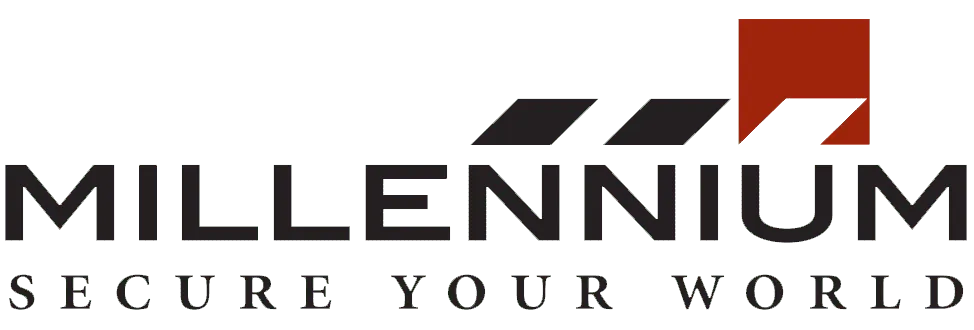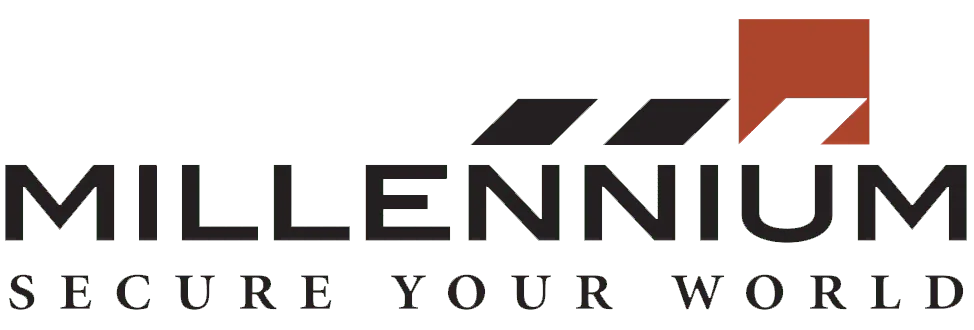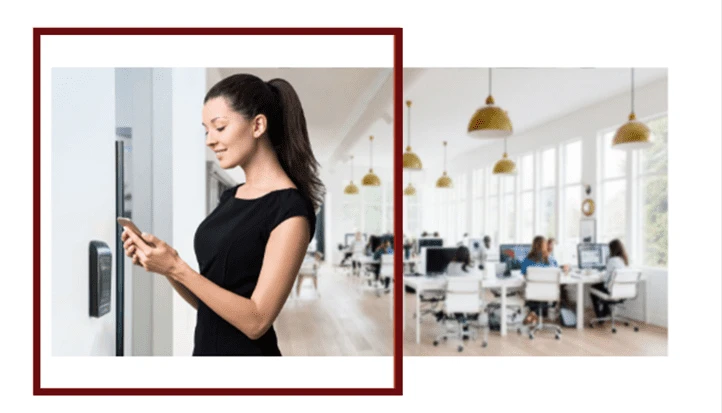Revolutionizing Control with Innovative Building Management Systems

In today’s intricate realm of property management, the challenges of overseeing day-to-day building operations and intricate systems can be daunting. Large properties often magnify inefficiencies, escalate operating expenses, and hinder the adoption of cutting-edge technology. Enter Building Management Systems (BMS), a solution designed to address these complexities and empower property owners. This article delves into the features and advantages that BMS brings to the table, shedding light on how they streamline operations and optimize performance. Definition of Building Management System Before we delve into the rich array of features and benefits that Building Management Systems (BMS) offer, it’s important to establish a clear definition. A Building Management System, or Building Automation System, is a computer application designed to oversee an array of mechanical and electronic systems within a structure. Akin to a conductor orchestrating a symphony, a BMS exercises control over crucial systems such as HVAC, lighting, energy consumption, and fire safety. A built-in analytics module allows real-time monitoring of usage patterns, enhancing your ability to make informed decisions. Unpacking BMS Features and Functionality Imagine a “mission control” for your physical building – that’s what a BMS embodies. You can access a sophisticated BMS via your computer dashboard, offering user-friendly navigation and graphics. Whether on a dedicated device or your computer, the interface provides enhanced security measures such as password protection. It’s flexible too, enabling configuration of daily or seasonal schedules for all connected utilities. The BMS serves as the nexus linking various building systems, providing a centralized interface for managing disparate elements. Its core functionalities include: 1. Illuminating Insights: Effortlessly control and monitor lighting, while tracking energy consumption to facilitate informed decision-making. Receive alerts prompting timely bulb replacements, and even schedule outdoor lights to illuminate automatically at night. 2. Enhanced Security: Seamlessly integrate with alarm systems and security cameras, enabling real-time tracking and management to safeguard your property. 3. Fire Safety and Sprinkler System: While primarily for monitoring, the BMS can collaborate with security systems to handle fire alarm panels, ventilation systems, and elevators during emergencies. 4. Access Control: Oversee access points to facilities like parking garages and pools, providing a robust amenity management solution. 5. Climate Optimization: Take charge of heating, air conditioning, and air handling systems to ensure optimal comfort and efficiency. The Benefits of Embracing BMS A BMS is more than just an interface – it’s a gateway to multifaceted advantages: 1. Optimal Comfort: Tailor lighting, air quality, and climate control schedules to ensure comfort for all occupants, enhancing their experience. 2. Efficient Energy Management: By scheduling lighting and HVAC systems, you minimize utility expenses and prolong system life, all while promoting energy efficiency. 3. Seamless Integration: Integrating the BMS with other systems bolsters data flow, facilitating actionable insights for better decision-making. 4. User-Friendly Advantage: Operating a unified BMS system proves simpler, quicker, and more efficient, reducing the risk of human errors. 5. Sustainability Champion: Effective energy management not only reduces operational costs but also contributes to a reduced carbon footprint, enhancing your property’s environmental impact. Selecting the Right BMS Choosing the ideal Building Management System requires careful consideration: 1. Ease of Implementation: Opt for systems with straightforward implementation to avoid complex onboarding and operational hassles. 2. Future-Ready Approach: Ensure the BMS aligns with your long-term goals and accommodates future scalability, preventing frequent system changes. In a landscape where efficiency reigns supreme, Building Management Systems emerge as essential tools for streamlined operations and enhanced sustainability. Their role in centralizing control, optimizing resource utilization, and providing real-time insights makes them invaluable assets for modern property management. As automation technology continues to evolve, the BMS remains a powerful driver in shaping a smarter, more efficient future.
How to Find the Right Installer for Your Business
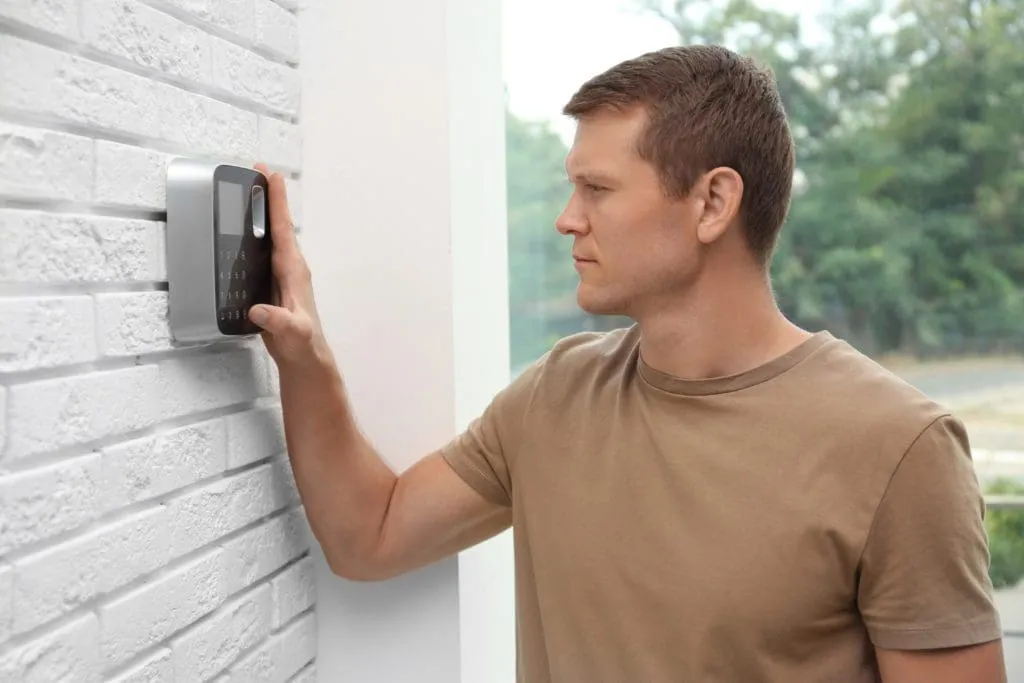
When your business is ready to take the next step, one crucial task is installing a security system for your office. This blog guides you through essential considerations to ensure a well-informed choice for this vital decision. Discover key insights to keep in mind as you select the ideal security system installer for your business. Understand the security needs of your building Depending on the property where your business is situated, you’ll have to understand what your major security needs are. These may include: Access control and manage the visitors Property video cameras should cover Audio Sensors on windows, doors, etc Video cam property management Do video cameras have to be visible, outdoor, indoor or both Integrated safety measures for smoke, fire, water, etc Once you have clarity on these aspects, you’ll find it easier to get an estimate and discuss various security details and solutions with your desired potential access control security control providers. Different types of security systems There are different types of security systems available in the market. So, it is essential to decide which one best suits your business needs and demands. Some of the different types are: A cloud-based security system A cloud-based security system stores all your security data in the cloud. So, your data is easily accessible from anywhere. In any emergency situation, you’ll be able to mediate if the need arises. Moreover, it allows software updates and significantly decreases your maintenance requirements. A hybrid security system a hybrid option lets you access your data from any remote location without the internet. However, you’ll have to spend more because you have to run security software as well as perform on-premises maintenance. Going for a wired or wireless system affects the aesthetics, convenience, and costs of the system. With wireless systems, you don’t have to deal with the wires all around you but they need a connection and are prone to hacking. Wired systems are implementation friendly if the building was planned at the time of construction. No matter which system you end up using, you have to contemplate power backup in case of power outages. Features of the security system Technology has a lot of options and solutions. Below given are several features you should look for while choosing an access security system. Video Security Video feed and cameras allow you to give access to your offices and also check on your property on a regular basis whenever it is necessary. Cam feeds have to be integrated with the smart lock access, which is an amazing choice for everyone but especially for those who are often away from their office. Usually, video cams are installed where valuables, important documents, or data are stored. Apart from these places, it is placed at the entrance and exit points in order to facilitate touchless access for your business. Monitor or not? While exploring door access control solutions, your major motive has to be to find a system that limits access to unauthorized people, at the same time offering secure but convenient entry for the authorized ones. One thing you need to check is if the system is remotely monitored or not. The remote feature enables you to open doors for employees or guests and limit areas and also makes you capable of monitoring your building even when you’re not on the same premises. One has to pay a certain amount on a monthly basis for remote monitoring. But, trust us the amount you pay is worth its services because automated requests are sent to the first respondents and also to the local law enforcement when there is an emergency. An unmonitored system is more affordable but then you have to monitor each and every event in real-time in the same building. Remote Control with a Mobile App The internet today has given us a superpower to control and manage situations and things from a distance. In addition to the internet, the superpower goes to an application on your smartphone or tablet. This app will let you work on your security system’s needs. You’ll in turn get flexibility, convenience, and plenty of peace of mind. Physical Safety Options Environmental safety is always one of the foremost priorities. An effective security approach would be one that includes carbon monoxide detection, smoke, fire, water as well as other environmental factors. With this, your security system will alert you and also the first responders. Energy Consumption and Operating Time You need to decide if you want your system to run 24/7 or only for a specific duration. This will tell you about your energy consumption especially when multiple systems are integrated into one operating system. Your budget Knowing how much you can spend on your system is very important. You can choose from a variety of service plans and price tags. Your planned budget will help you filter out many options, in terms of high or low prices. Then, you’ll be left with a narrow range of options. Businesses in the early stages may want to or need to cut some of their initial operating or investment costs. However, don’t cut any costs at the expense of your security. The property and the lives both will depend on it. In case you choose a long-term service contract, there are chances that you don’t have to pay a fat amount upfront because many providers are ready to spread the amount over the term of the service. Benefits of Access Security System 1. Simplified Management This is the top benefit of the access control system. It simplifies the management process of handling credentials of your employees, tracking, and security. 2. Track Every Activity Once you have installed an access control system, tracking every activity will become so easy and simple for you. This includes activities from your employees or even visitors, guests, and delivery persons. 3. Adjust Access Times The modern access control systems make it easier for you to set specific access times for anyone including your employees, visitors, or
Top Access Control Trends for 2025
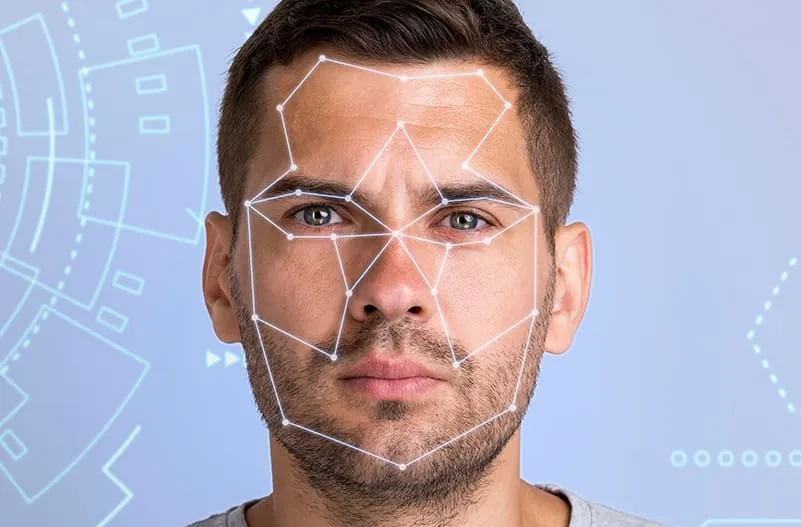
Updated on December 20, 2024 Access control trends 2025 showcase groundbreaking innovations that prioritize user-friendly experiences, robust integrations, and advanced operational capabilities. As technology continues to evolve, organizations must consider how these trends can elevate their security systems. Let’s explore how access control is transforming in 2025 and what organizations should consider enhancing their security strategies. Cloud-Based Access Control Systems: Centralized and Scalable Cloud-based access control systems are rapidly becoming essential and will become the top access control trend in 2025. These systems offer centralized management for security teams, making it easier to handle multiple sites from one platform. By moving to the cloud, businesses can unify control over access credentials, monitor system health, and manage configurations remotely. The scalability of cloud-based solutions allows businesses to expand their security infrastructure without significant hardware investments. As organizations grow, they can easily add more sites or users without overhauling the entire system. Additionally, cloud solutions offer cost-effective disaster recovery and simplified software updates, ensuring that organizations stay up to date with the latest security features without disrupting operations. This cloud-centric model reduces reliance on physical hardware, saving space, and improving operational efficiency. It also enables security teams to streamline data sharing, enhance collaboration, and quickly implement changes across various sites. For businesses with multiple offices or facilities, the centralized nature of cloud access control helps ensure that security is never compromised, even as operations expand. Mobile and Contactless Access: A Seamless User Experience Mobile-based access continues to replace traditional credentials like keycards and fobs, and this access control trend is only set to grow in 2025. The shift to mobile and contactless access provides a more secure and user-friendly experience. Employees, visitors, and contractors can use their smartphones or wearable devices for seamless entry into secure areas, eliminating the need for physical cards and reducing the chances of lost or stolen credentials. By leveraging technologies like Bluetooth, NFC, and QR codes, mobile access solutions ensure fast, reliable, and secure entry. Customizable mobile credentials also allow organizations to integrate visual identity features—such as job titles, department designations, or photos—into the access system, enhancing both security and user experience. Mobile credentials are more than just a convenience; they represent a significant leap forward in access control technology. The security features embedded in smartphones, such as biometric authentication, encryption, and secure communication channels, make mobile access a safer option compared to traditional physical cards. With the ability to remotely deactivate or update credentials, mobile-based access control provides organizations with flexibility and peace of mind. So, don’t be surprised if this solution becomes the top access control trend in 2025. Touchless Technology: Enhancing Hygiene and Efficiency The growing demand for touchless access solutions has been a game-changer, particularly due to the heightened focus on hygiene and reducing physical contact in the wake of the global pandemic. Touchless systems, which often rely on motion sensors, facial recognition, or mobile credentials, offer a modern and hygienic way to navigate buildings without the need to touch any surfaces. These technologies not only improve hygiene but also reduce wear and tear on physical hardware. As more users interact with access systems, devices are subjected to frequent use and potential damage. Touchless technology extends the lifespan of devices by reducing the frequency of contact and minimizing physical strain. This results in fewer maintenance needs and cost savings in the long run. As organizations focus more on the well-being of their employees and visitors, touchless systems become a significant part of the access control landscape. They enhance the overall user experience by making entry faster and more convenient while promoting a safer, cleaner environment. Smart Automation: Streamlining Operations The next in the access control trends list is Automation. By integrating access control systems with building management platforms, businesses can automate a wide range of processes, such as locking schedules, occupancy monitoring, and visitor registration. Automated systems reduce the manual effort involved in managing security tasks and provide a more efficient approach to operational management. For example, in an emergency scenario, automated lockdown protocols can trigger swift and coordinated responses across multiple locations. This ensures that all entry points are secured immediately, and relevant authorities are notified, without requiring manual intervention. Similarly, automated systems can adjust access privileges for users based on factors like location, time of day, or security risk level, ensuring that only authorized individuals can access specific areas at appropriate times. Smart automation enhances operational efficiency by eliminating the need for time-consuming administrative tasks and improving security coverage. With automation, organizations can focus on higher-priority security concerns, knowing that routine tasks are being handled automatically. Video-Integrated Access Control: Enhanced Situational Awareness Video-integrated access control systems are rapidly gaining traction and will continue to do so in 2025, combining access control and video surveillance for a more comprehensive security solution. This integration allows security teams to view real-time video footage in conjunction with access events, providing instant visual verification of an entry attempt. By combining video data with access control logs, security personnel can quickly assess whether an entry was legitimate or if an alert needs to be raised. This integration also makes it easier to review incidents and conduct investigations. Video surveillance systems can be integrated with cloud storage solutions, allowing for easy access to recorded footage from anywhere. The ability to monitor both video and access events from a single platform enhances situational awareness, improves incident response times, and helps organizations make better security decisions. Video-integrated access control enables a holistic approach to security, making it easier to protect assets and personnel while optimizing security operations. This makes it as one of the top access control trends for 2025 Remote Management: A Flexible Security Solution Remote management is a critical cornerstone of modern access control trends for 2025. With an increasingly hybrid workforce, businesses need systems that enable administrators to oversee and manage security operations from anywhere. This access control trend supports hybrid work environments by providing the flexibility to monitor and update credentials, manage incidents, and
A Complete Guide to Parking Access Control System
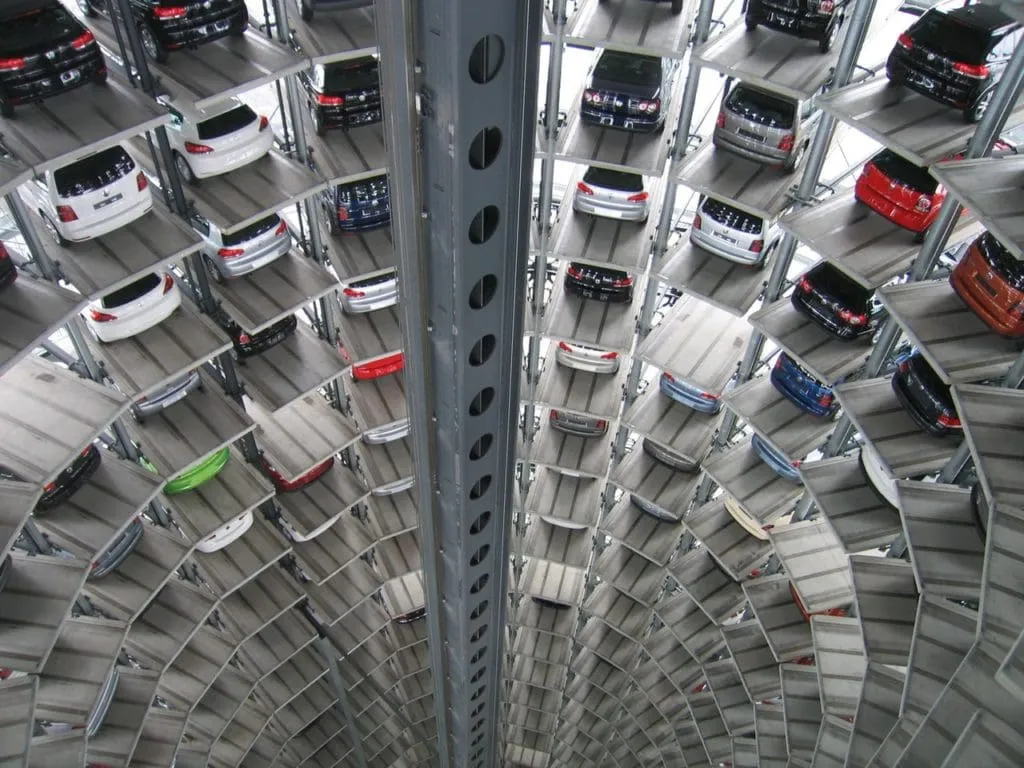
Updated on December 9, 2024 Managing parking facilities is a complex task, requiring efficient systems to regulate the influx and outflux of vehicles while ensuring security and ease of access for users. Parking access control systems, ranging from manual management to fully automated solutions, are designed to address these challenges effectively. This comprehensive guide explores key aspects of parking access control systems, their benefits, and various technologies that have transformed parking management in recent years. What is an Automated Parking Lot Access Control System? An automated parking lot access control system is a solution that enables facility owners to manage parking operations efficiently, restrict unauthorized access, and generate revenue. These systems rely on a combination of physical access control mechanisms, credential management, and integrated payment solutions. Automation introduces significant advantages, such as reducing operational costs, enhancing security, and improving user experiences. Automated parking systems typically use ticketing machines with barcodes, QR codes, or magnetic strips, paired with software for seamless tracking and management. Whether through fully automated systems or hybrid solutions incorporating human oversight, automation ensures a safe, efficient, and user-friendly parking experience. Types of Parking Lot Access Control Systems Key/Remote Access This traditional system works well for long-term users but presents challenges for short-term users. The potential for key loss and unauthorized use makes it less secure compared to modern solutions. Keycard or Key Tag Access Similar to key-based systems, keycards offer enhanced security by allowing administrators to deactivate lost or stolen cards. This method is suitable for both permanent and mid-term users, especially in commercial settings. Keypad Entry Keypads grant access using personalized or general codes. Their flexibility and ease of installation make them a popular choice for short-term users, such as visitors to residential complexes or offices. Codes can be programmed for limited time use and deactivated as needed. License Plate Recognition (LPR) LPR technology uses cameras to read and verify license plates, allowing seamless entry for registered vehicles. This method eliminates the need for physical credentials and simplifies tracking time spent in the facility. Phone Number Recognition Users call a designated number to trigger gate access, ensuring only verified individuals gain entry. This system works well for all types of users, from short-term visitors to long-term tenants. Mobile App or Mobile-Based Access and Contactless Mobile apps have become integral to modern parking systems. These apps allow users to access parking facilities via mobile-based credentials, providing a highly user-friendly solution. Additionally, the inclusion of contactless functionality ensures a smooth and secure experience by enabling proximity-based access, where users don’t need to physically touch any devices. This system is becoming increasingly popular for its convenience, especially for short-term and transient users. Advantages of Automated Parking Access Systems Automated parking lot access solutions offer several advantages over traditional methods, making them a smart investment for facility owners: Enhanced Operational Efficiency By replacing manual processes with automated systems, parking facilities can streamline operations, reduce wait times, and eliminate bottlenecks at entry and exit points. Cost Reduction Automation minimizes the need for on-site staff, lowering payroll expenses. Machines efficiently handle ticketing, traffic direction, and payment collection. Increased Revenue Integrity Automated systems reduce revenue leakage by preventing employee-related thefts and mitigating errors in manual transactions. Comprehensive Data Insights Automated systems maintain detailed records of all transactions, offering valuable data for analytics. Facility owners can use this information to identify trends, optimize parking capacity, and enhance decision-making. Improved Security Advanced access control mechanisms like LPR and RFID technology ensure that only authorized vehicles gain entry, reducing the risk of unauthorized access and related incidents. Choosing the Right Parking Lot Access Control System Selecting the ideal system depends on the unique needs of your parking facility. Factors to consider include: User Base: Assess whether your users are short-term visitors, long-term tenants, or a mix of both. Security Requirements: Prioritize systems like LPR or RFID for high-security locations. Ease of Use: Ensure the system is intuitive and accessible for all users, including those unfamiliar with advanced technology. Scalability: Opt for solutions that can grow with your facility’s needs, accommodating increased traffic or expanded services. By aligning your choice with these factors, you can create a tailored parking access solution that balances security, efficiency, and user satisfaction. Innovations in Parking Lot Access Control Technology The parking industry has witnessed remarkable technological advancements in recent years. These innovations aim to enhance the user experience, boost efficiency, and ensure sustainability: Cloud-Based Parking Management Cloud-based platforms offer centralized management of multiple parking facilities, enabling real-time monitoring and remote control. This approach enhances scalability and reduces the need for on-site infrastructure. Smart Sensors Smart sensors embedded in parking spaces detect vehicle presence, providing real-time availability updates to users via mobile apps. This feature reduces the time spent searching for parking spots. Mobile Integration Mobile apps have become integral to modern parking systems, offering features such as digital payments, navigation to available spaces, and reservation management. Renewable Energy Solutions Sustainable parking facilities now integrate renewable energy sources like solar panels to power access control systems, lighting, and EV charging stations. Advanced Analytics Data analytics tools analyze parking patterns, helping facility owners optimize space usage and implement dynamic pricing models to maximize revenue. Real-Life Applications of Parking Access Control Systems Parking access control systems are deployed across various sectors, demonstrating their versatility and impact: Corporate Offices Automated systems streamline employee parking, reducing entry times and minimizing delays. Advanced features like LPR ensure secure access for registered users. Residential Complexes Secure access control mechanisms, such as keypads or phone recognition, offer convenience and safety for residents and visitors alike. Commercial Parking Lots Dynamic systems handle high traffic volumes efficiently, incorporating automated ticketing and payment solutions to optimize operations. Healthcare Facilities Hospitals and clinics benefit from smart parking systems that prioritize patient and staff access while accommodating emergency vehicles. Educational Institutions Universities use automated parking solutions to manage large student and staff populations, ensuring organized and secure parking facilities. Future Trends in Parking Lot Access Control As urbanization and technology
Elevator Access Control Simplified: A Comprehensive Guide
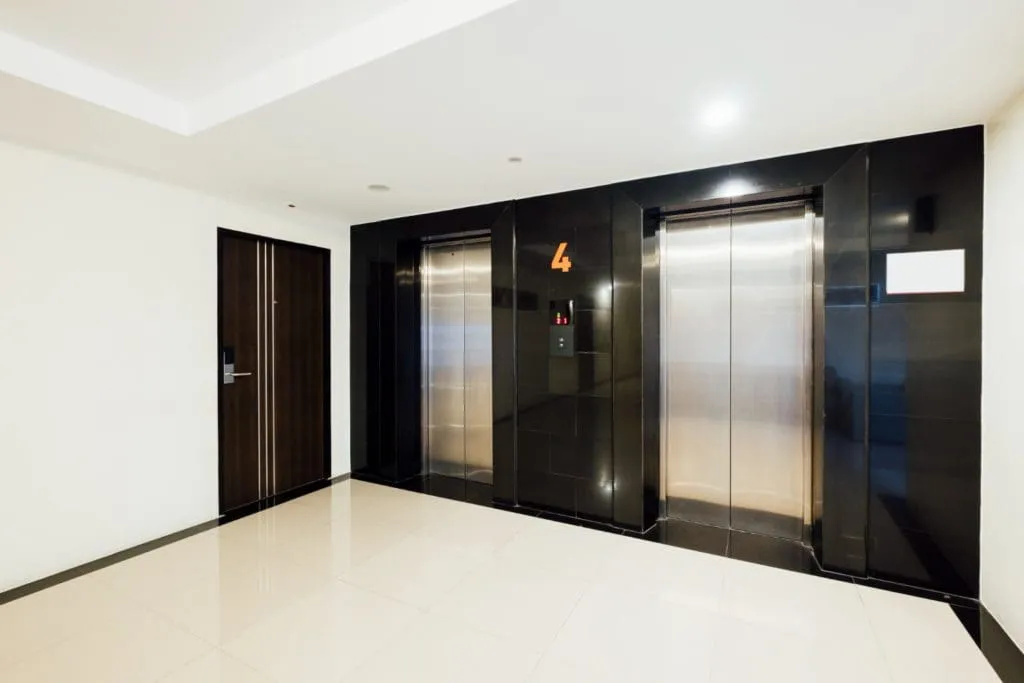
Updated on December 9, 2024 In modern building management, elevator access control has become essential to secure and restrict movement within multi-floor facilities. Unlike conventional access control, where authorized users simply open doors, elevator access control directs movement through multiple building levels, limiting floor access to only those permitted. This guide delves into the mechanics of elevator access control, including how it works, types of systems, credentials, configurations, security challenges, and evolving cloud-based technologies. With this knowledge, building managers and property owners can elevate their security measures to enhance building convenience and safety. Deciphering the Functionality: An elevator access control system relies on three main components: Elevator Control Buttons: Used to open and close doors, make emergency calls, and select floors. Access Readers: These devices, using RFID, keypads, or biometric scanners, verify that users have the proper credentials to access specific floors. Access Control Panel: This control hub manages user data and permissions, typically as an on-site server or through a cloud-based solution. Together, these components ensure that only authorized personnel can access certain floors, promoting security and safety in sensitive areas like office buildings, medical facilities, or high-rise residential complexes. Streamlined Usage Instructions Using elevator access control is straightforward. Upon entering the elevator, a user presents their credential—be it a keycard, mobile phone, PIN, biometric scan, or one-time code. If authorized, the system allows the elevator to move to the designated floor. Unauthorized users will be restricted from selecting or accessing restricted floors. Types of Elevator Access Control Credentials To accommodate various security needs and user preferences, elevator access systems support different types of credentials: Mobile Credentials: Allows users to access floors by tapping a mobile device, reducing the need for physical keys or cards. Keycards, Fobs, or Badges: The most common credentials, these provide reliable access when swiped or tapped. PIN or Passcode: Ideal for temporary or multi-user access, users enter a code to gain access to specific floors. One-Time Code: This credential type is ideal for one-time visitors, such as deliveries, allowing managers to provide a temporary access code that expires after use. Biometric Access: Uses unique user data, like fingerprints or facial recognition, to ensure high-security access. Configurations of Elevator Access Control Systems Elevator access control can be customized to fit specific building needs. Here are four common configurations: Private Elevator for General Access: Users require authorization to summon the elevator but can access any floor freely once inside. Public Elevator with Restricted Floor Access: The elevator can be called without restrictions, but access to certain floors requires credentials. Private Elevator with Selective Floor Access: Users need authorization both to call the elevator and to access specific floors. Destination Control System (DCS): This advanced system allows users to select their destination on an external panel, which optimizes elevator usage based on the scanned credential, directing users to specific elevators. The Rise of Cloud-Based Elevator Access Control With remote work and evolving security needs, cloud-based access control systems are gaining popularity. These systems allow remote management and monitoring, making them ideal for multi-location building owners and property managers. They also support seamless updates and scalability, adapting easily as buildings add new floors or tenants. Popular Cloud-Based Options Include: Single Elevator Access Control: A cost-effective solution for small buildings or residences. Elevator Banks: Suited for high-rise commercial buildings where multiple elevators serve various floors. Smart Elevators: Integrates multiple elevators into a centralized system, ideal for office towers where efficient elevator use is essential. Expanded Security Enhancements Modern elevator access control systems offer enhanced features to ensure both convenience and heightened security: Time-Based Access Permissions: Limits floor access to specific hours, suitable for facilities with restricted visiting hours. User Logging and Reporting: Tracks access attempts and movements, providing insights for security audits. Anti-Passback Technology: Ensures credentials can’t be reused immediately, reducing the risk of “tailgating” unauthorized entry. Integration with CCTV: Pairs elevator access logs with real-time video, allowing security teams to monitor and respond to potential threats efficiently. Detailed Challenges and Solutions in Elevator Access Control Elevator access control faces unique challenges due to frequent public use and the potential for security lapses. Here’s a look at some common issues and solutions: Tailgating: One of the most common issues, tailgating involves unauthorized individuals entering behind an authorized user. Anti-tailgating technology and clear user guidelines can help mitigate this risk. System Failures: Elevator access systems must remain operational even during power outages or software failures. Back-up power sources and fail-safe protocols can keep elevators running in an emergency, ensuring user safety. Credential Security: Lost or stolen credentials, like cards or mobile devices, can compromise security. Multi-factor authentication and biometric credentials offer additional protection by tying access to a user’s unique characteristics. Technological Advancements in Elevator Access Control In the ever-evolving landscape of building security, modern elevator access control systems integrate cutting-edge technologies to help overcome common security challenges. Here’s how these systems integrate with other technologies to enhance reliability and security: Mobile Access Control Integration: Mobile access control systems enable building managers to remotely grant access to elevators using mobile devices. This capability is especially useful in managing visitor access and responding to emergencies quickly, all without the need for physical presence on-site. Video-Based Analytics Integration: Advanced access control systems integrate seamlessly with video surveillance, using video-based analytics to detect unusual behavior patterns near elevators. By analyzing real-time footage, the system can identify potential security threats, alerting personnel to suspicious activities, and allowing for quicker response times. This integration also allows for footage to be linked directly to specific access events, simplifying the process of security review and incident management. Tenant Management Module: Access control systems offer robust tenant management features, enabling multi-tenant buildings to customize and streamline access for each tenant. This module ensures that tenants can only access floors or areas relevant to their needs, minimizing security risks and ensuring that authorized personnel have controlled access across different building levels. Visitor Management Module: A visitor management module integrated with the
Why Invest in an Access Control System for Your House Safety?

In keeping your family safe, a few things are more important than securing your home. But even the most secure locks on your doors and windows can’t prevent a break-in if someone has the physical key. Access control systems use encrypted codes to verify who you are and grant you access to any areas of your home (or business) you want to open up. And these days, they’re cheap enough that every home should have one. As revealed in the report by Mordor Intelligence, the access control market is increasing at a compound annual growth rate of 7.38% over the next 5 years. You may ask: Is it necessary to install a home access control system? This article will show you why you should invest in one now. What Is an Access Control System? An access control system (also known as a security system or an access database) is a computerized method of recording and monitoring who goes where within a building. It monitors the location and compares it against who should be in those areas. If there’s no match, there’s likely something amiss. For instance, if you didn’t authorize another person to enter your home and they do, your alarm will go off, warning you that someone has entered without your knowledge or consent. Access control systems are beneficial in the way that they bring peace of mind and safety to your family. They protect you from intruders, package thieves, and other people who can be a threat to your home’s security. What Are the Types of Door Access Control Systems? There are several types of door access control systems you can choose from when building a home security system. First is an alarm system that alerts you when someone is trying to gain access to your home or building. The second type uses a card swipe that allows access only after a certain code has been entered. Other kinds of door security systems allow visitors to be granted limited time periods, during which they can enter and exit as they please. How Do Access Control Systems Work? To decide whether investing in an access control system will help keep your family safer, it’s important to understand how these systems work. Many entryways, both interior and exterior, are guarded by access control systems. These machines automatically detect when someone is authorized or unauthorized to enter a particular area. Authorized parties then gain passage through security doors, while unauthorized people trigger alarms until they leave. Whether you’re looking to restrict access around your home or just want more peace of mind at night, installing a reliable access control system can provide protection against burglary and intruders. Top Reasons Why Your House Should Have an Access Control System There are many advantages to installing an access control system in your home. Below are the top 8 reasons why you should invest in this type of access database. 1. Affordable Burglary Prevention The best residential access control systems can be a powerful tool for controlling what comes into your home. They’re also beneficial as a property management software, which helps with keeping track of your home inventory and valuables. It doesn’t matter if you rent out several homes or just one. Investing in a residential access control system will 10 times more likely give you ease knowing you can protect your property and prevent burglaries. 2. Higher Property Values Protecting your family, valuables, and property with a home security system is a smart investment. Not only will you be safeguarding your property and belongings, but you’ll also be increasing its value. This is especially important as so many people are purchasing homes these days, and they want to feel secure before deciding on a new property. Hence, there’s no question that residential access control systems offer significant advantages over traditional home security systems. In fact, a survey from Allegion showed that 52% of millennials prefer to access their house via alternative entry methods, such as Pincode, card, smartphone, biometric, and key fob. 3. Lower Insurance Premiums According to a report from Monitronics, access control devices are extremely beneficial. As highlighted in their research, property management software usage leads to lower insurance premiums than comparable properties without such systems. Because you can keep your place safer with access control devices, it’s definitely worth it. 4. Better Security, More Peace of Mind Installing access control devices and the best property management software can greatly increase your peace of mind and home security. By investing in these security systems, you’ll be preventing criminals from entering your property illegally. So, keep your family, neighbors, and possessions safe with home safety tools. 5. Completely Integrated and Automated Home Security The best part about owning your own home is having complete control over what goes on inside. So while you should feel free to turn lights on and off, there are a few things that shouldn’t be left up to you—and that includes access to your house. Other things you can freely do with an access control system are open and close windows, change temperature settings, and run other basic operations on your own time. With a fully integrated and automated security system, anyone who wants to get into your home will have to ask for permission first. 6. Lesser Energy Bills If you’re a homeowner, there’s a good chance that your utility account covers more than just electricity and water. Be it heating, air conditioning, or any number of other services, you might be paying hundreds per month on bills. The smartest way to save money? Lock down access control systems with energy-saving capabilities. This will help reduce your energy consumption by automating settings like thermostats and windows that can help you maintain better temperature regulation and save money on utility bills overall. 7. Proven Efficiency An access control system utilizes radio frequencies or sensors and fingerprint technology to monitor who’s coming and going from your home. It can also be used by outside security guards
The Ultimate Keyless Entry System Guide: Everything You Need To Know
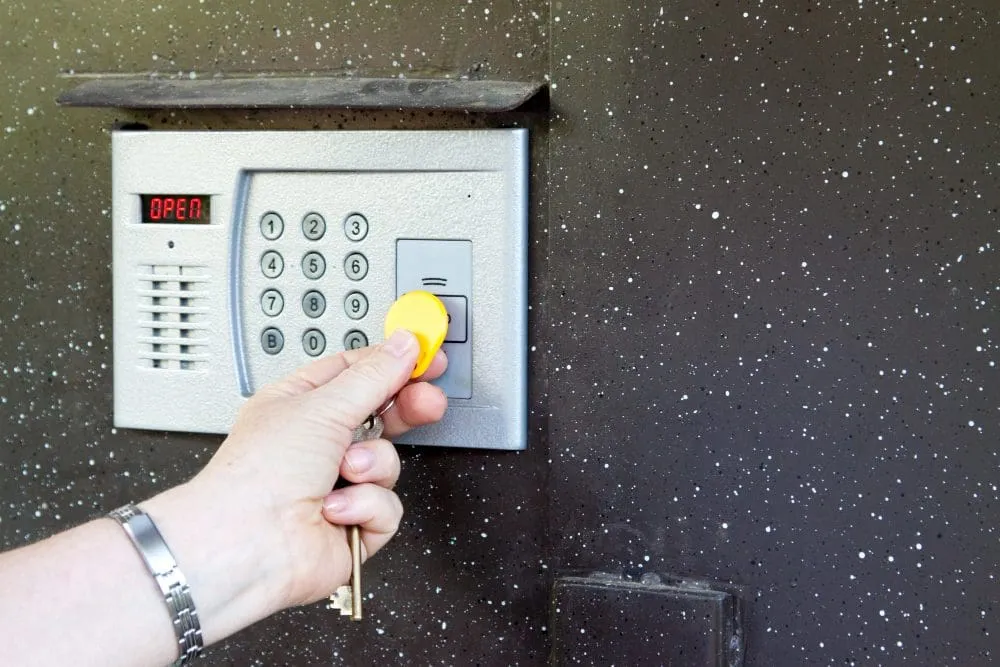
With the advent of advanced cloud technology, it’s no surprise that keyless entry systems are rapidly gaining popularity across various industries. Embracing keyless solutions allows businesses to streamline daily operations while maintaining a high level of security within their premises. As cutting-edge cloud technology continues to be embraced by industry leaders, accessing secured areas and entryways using smartphones has become a reality for end-users. Beyond convenience, these advanced systems empower business owners and managers with greater control, enabling them to tailor access permissions to align with specific responsibilities. Understanding Keyless Entry Systems: While the term “keyless entry systems” may seem self-explanatory, a deeper exploration is essential in today’s rapidly evolving digital landscape. While many have encountered keyless systems in vehicles and private residences, our focus here is on commercial keyless entry systems designed to secure business premises such as schools, warehouses, corporate offices, and other commercial establishments. How Do Keyless Entry Systems Operate? Keyless door locks function much like traditional lock-and-key mechanisms, facilitating the opening and closing of various entry points within a facility. The fundamental distinction lies in the absence of a physical key. Depending on the chosen model, authorized personnel can input a code, utilize a keycard or key fob, or engage biometric methods such as thumbprints or facial recognition to gain entry. The lock generally remains open for a brief duration after activation and re-engages automatically upon door closure. Benefits of Adopting Keyless Entry Systems: Enhanced Security: Conventional keys are prone to loss, duplication, and are ill-suited for modern security needs. Keyless entry systems require unique credentials for authorized users, reducing the risk of unauthorized key copying and access. Ease of Management: Traditional lock-and-key procedures necessitate reconfiguration and key replacement whenever an employee departs, incurring significant costs. For businesses with high turnover rates, this poses financial and security challenges. Electronic keyless systems offer effortless reconfiguration, allowing addition or revocation of credentials without the need for physical keycards. Comprehensive Data Insights: Unlike traditional keys, keyless entry systems offer real-time tracking of entry actions, ensuring a detailed record of access. Encrypted communication verifies credentials, offering heightened security and precise entry tracking. Remote Accessibility: Operating on cloud-based architecture, keyless entry systems prove invaluable for businesses with multiple locations. Administrators can remotely adjust schedules, lock and unlock doors, and manage access privileges effortlessly. Varieties of Keyless Electronic Door Locks: Keyless/Wireless Smart Locks: These locks connect via Wi-Fi, offering remote control of security features through a mobile app, regardless of geographical location. Many smart locks incorporate Bluetooth technology, enabling automatic door unlocking within proximity. Keypad/Combination Locks: Requiring a personal identification number (PIN), these locks are easy to install and maintain. Codes can be assigned to multiple users, and PINs can be changed periodically for added security. Biometric Locks: Biometric locks utilize unique identifiers such as fingerprints or ocular scans for access. This highly secure method reduces the risk of unauthorized entry. Selecting a Keyless Entry System for Your Premises: Choosing the ideal keyless entry system hinges on aligning features with your business requirements. Keypad locks are suitable for those averse to traditional keys, while considerations like the number of codes and remote access capabilities should also influence your decision. Addressing Common Challenges: While Keyless Entry Systems enhance security, challenges exist. Tailgating and vulnerabilities can compromise effectiveness. Smart systems, leveraging mobile credentials and video recognition, mitigate risks. This comprehensive guide aims to provide an illuminating exploration of Keyless Entry Systems. By assimilating these insights, you’ll navigate the landscape of access control with heightened comprehension and awareness, empowering your organization with advanced security solutions. With the appearance of a few advances in cloud technology, it’s not unexpected that keyless entry systems are filling in ubiquity across countless enterprises. Going keyless offers organizations the chance to work on standard routines at the workplace while keeping structures and offices properly secured. As cutting-edge cloud technology is quickly embraced by top industry players, it is presently workable for end-users to effortlessly get to safeguarded workplaces and entryways with their cell phones. The top frameworks additionally award entrepreneurs and directors more command over their offices, as they can undoubtedly modify the framework to give staff the level of access uniform with their duties. Introducing Millennium Ultra: A Cloud-Based Keyless Entry Solution Millennium Ultra presents a scalable and customizable cloud-based keyless entry system, seamlessly integrating hardware and software. With an intuitive mobile app, users experience personalized access and a secure environment. In essence, keyless entry systems have ushered in a new era of access management, revolutionizing security protocols and operational efficiency. By embracing this technology, businesses can unlock a realm of possibilities, ensuring a safe, streamlined, and intelligent approach to access control.
How To Secure Your Commercial Building With Access Control Software
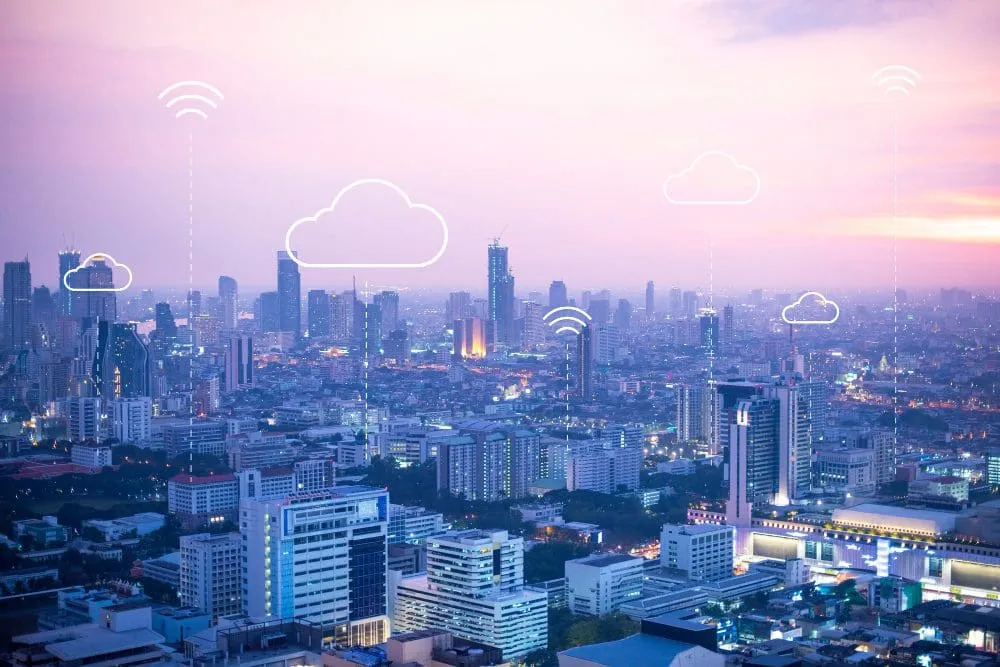
Security Systems are imperative to a building. They give consistency in business activities, security of discernible resources, intellectual property and, most importantly, human existence. Business properties, air terminals, modern endeavours, retail shops, schools, monetary and administrative establishments, clinical offices, power-, oil and gas organizations, as well as private buildings, require a novel arrangement of wellbeing and safety efforts on the grounds that each kind of property is vulnerable against various risks. Why Should Your Building Invest in a Commercial Access Control Software? Safeguarding your business with a security system was once simply an idea, yet with the evolving times, it has become even more a need nowadays. Your business is a speculation, and it merits safeguarding. Try not to be among the business visionaries who swear off a business security system until it’s past the point of no return all things being equal, be proactive and introduce surveillance cameras, interloper discovery hardware, and access control systems today. Here’s the reason putting resources into business security is beneficial. Save Your Business Assets For some entrepreneurs, the driving component to introduce a security system is the opportunity to watch out for significant resources consistently. From speciality machines to costly products, your resources are always in danger of harm or robbery, whether by gatecrashers or disappointed representatives. With cameras to get the activity and an alert system to get the specialists there quickly, your security system can assist with safeguarding your primary concern and dealing with offenders. Safeguard Your Employees Forestalling losses in your business is about something beyond saving your resources, it’s likewise about safeguarding your people. A few highlights of a business security system incorporate panic switches, paging, fire alarms, radio hardware, and mass warning systems, which are all intended to make the workplace free from any danger. Beat Crime down The simple presence of reconnaissance cameras is regularly to the point of deterring would-be crooks from breaking into your business or taking a product off the rack without paying for it. Cameras additionally assist with keeping workers in line since they realize they’re being watched consistently. Forestall Unwanted Visitors Progressed electronic locks and programmable key fobs are safer than customary keys, which can be lost or replicated without your assent. Access control and radio systems permit you to screen and control who enters the facility and any restricted regions inside your industry. You won’t ever need to stress over individuals intruding without your insight again. Promote Fewer Fraudulent Claims As an entrepreneur, you are in danger of falsified liability claims. For example, a representative could unfairly guarantee a work environment injury or a consumer could pretend to be harmed in your store. With surveillance cameras there to catch everything, you can confirm or negate these cases, as well as decide any wellbeing issues that should be set out to stay away from future episodes. Meet all requirements For Lower Insurance Premiums Insurance suppliers perceive the worth of a business security system, as it shields against everything from interruption to robbery to the labourer’s remuneration. Your diminished gamble in the wake of introducing a security system could qualify you for lower rates, getting a good deal on your insurance installments consistently. Inner harmony Day And Night Present-day security systems are robotized, so you have less to stress over after you close up for the evening. At the point when you use remote observing, you can take a look at live film of your business from anyplace, whenever. You can likewise set up notifications from movement sensors, window and entry contacts, alarm switches, and different parts of your system to get prompt cautions when something turns out badly. What makes a robust building security system? With regards to security systems, six primary sorts are much of the time utilized. Every one of these possesses an alternate piece of guarding your business. They can be summed up as: Access Control Systems – By integrating savvy locks, ID identifications, and credential readers, you can guarantee that the main approved staff can get to specific regions on-premises. Dive more deeply into our entrance control choices here. Intrusion Alarm Systems – Notification alerts that will sound when a piece of your structure is penetrated. These building caution systems are set off by events and will alarm you when security has been compromised. Video Surveillance Systems – Security cameras that screen your space incorporate state of the art AI analysis that enables you to overview for dubious action and forestall wrongdoing in and around your office. Sensors – These sensors help to screen ecological variables around your office like smoke, moisture, humidity, and other possibly compromising circumstances. How to establish a building security system? Most importantly, you want to evaluate your potential dangers that rely significantly upon a sort of building/association being referred to. Find out if you want an incorporated security system or can get by with standalone systems. Consider whether you need to foster an exclusive security system or would prefer to enlist a specific association that will shield your business against potential dangers? Assuming that you pick the last option, observe a respectable security organization which can depend on your organization’s/private property’s wellbeing too. To summarize, whether you are keen on a security system for business fabricating or are picking among some apartment complex security systems accessible in the market, an intricate methodology will benefit you. By implementing a thorough security system you can have confidence that your property is defended at different levels, which can’t be accomplished by basically employing a door manager. Why Partner With Millennium Group INC? Millennium Group INC is a renowned business security system provider and we can deal with all organizations’ security needs with the best client experience. We esteem our client’s trust more than anything else, and we are devoted to giving organizations enough harmony and security through our modern cloud-based access control system and impeccable hardware integrated with it. Our security specialists are available across the day. You can reach us any time, and we’ll try to be accessible
Elevator Trends: Progression of Stairwells From Mechanical to Automation and Advance Security

Simple transportation machinery was invented in 1743, and its modernization began in the 19th century. The older elevators were mechanical, of lower quality and they were operated by either being pulled by an animal or a semi-motorized assembly controlled by humans. Belt-driven elevators were used in the beginning, later elevators used steam engines and even oil-water hydraulic systems. Now, with coming of age, we have advanced, connecting skyscrapers, floors after floors with the help of the automated elevator technology and also doubling up with the integration of security systems both inside and outside the elevators. We are building more and more skyscrapers than ever before. Therefore, the use of elevators in those structures is increasingly growing. As a result, the usage of access control and security systems has risen significantly. Hotels, offices, hospitals, and even malls have begun to integrate the use of access cards for their guests and employees, and elevators are now equipped with surveillance cameras to avoid any unforeseeable and inhuman incidents. According to research, the demand for elevators has increased, and with it, the demand for access security systems has increased as well. What’s New and Trending in Elevator Security? With the modernization of the elevators, new security specifications are being added to the software to make them more robust and flexible to meet the changing access control needs in buildings. Millennium spent more than two decants in R&D to understand the ever-shifting needs of the customers and constantly upgraded itself in the elevator industry. This led MGI to integrate the new elevator technology with the trending elevator security system that stood the test of time for the last 25 years into launching advanced elevator security that is both hardware reliable and allows seamless software integration. The new elevator features are: The hardware components of the board are of top quality. Millennium provides a relatively compact design with a faster and better working unit. Millennium has reduced the size of its part as hardware has improved, resulting in a design that is condensed and simple to install. As the processor used by the MGI is quick and steady, it ensures easy and fast updates to the hardware, making it smooth to operate. How to choose the best Elevator Access Security Solution? In order to choose an access security solution that perfectly fits your requirements, you must look for the following features: Ease of Use: In all workspaces, user-friendly equipment is favored. The convenience decreases complexity and also saves time. Taking this into account, Millennium provides its customers with a variety of pre-engineered boards that are lightweight, pre-wired, feature with the latest hardware, and are relatively simple to mount and install. Flexible: This is a critical element. A better user interface leads to better results and reflects the flexibility of the product. Millennium’s software called Millennium Ultra 5.0.0 is smart and performance-driven. In addition, the software added the following new features: Network addition for compatibility (coming soon) Smoother working with or without a network connection New design to integrate multiple boards together Reliable: It is an important factor when choosing a security system. Millennium’s Elevator hardware system security has proven to be reliable and is still the most desired solution in the market, acknowledged by the dealers. New products are released with the same reliability as older products, and all of the previously popular features are improved and reintroduced in the newer products. MGI stands out in the elevator industry due to the high quality and specifications of its goods. They design software-integrated elevators that are simple to operate and provide the best results. The software they use is backward compatible and offers the most versatility. The installation is easy, and these elevator systems provide the highest level of reliability. With all of these facilities in place, MGI makes a strong impression on the industry. Read more about: Hardware Reliability in Access Control Smartphone door open system- Mobile Connect Cloud-hosted access control CCTV video software integrations Biometric door open systems
Reduce Theft in Your Retail Store With Access Control

More than a dozen states began emerging from their coronavirus lockdowns, leaving business owners, workers and consumers to decide what normal means now. Unfortunately, before the pandemic retail stores have always been vulnerable to theft and are still much vulnerable. That’s because these stores have two things every thief wants in a hurry: valuables and cash. However, retail store owners/managers can easily fight back against theft by implementing certain security measures and protocols. An Access control is used to identify an individual, authenticate them, and then permit the individual entrance. Here are some security measures that retail stores should implement include: • Installing security cameras• Using security mirrors• Installing entrance alert sensors• Training employees• Posting signage Throughout this blog, we’ll closely look at each of these security measures and how they can help to reduce theft in retail stores. Security measure #1: Installing security cameras Security cameras help you keep an eye on the entire store, whether you’re on property or not.Depending on your business needs, you can choose to simply steam video footage in real-time to help you monitor and catch any theft as it happens or you can record and store footage to help authorities track down thieves after the crime is committed. Cameras that are placed in highly visible areas where they can be seen by potential thieves/shoplifters can help prevent crime before it ever occurs. Security measure #2: Use security mirrors No matter how big or small the space, your retail store likely has multiple “blind spots. Strategically-placed security cameras can help you keep an eye out, even when you’re busy helping other guests. These round/dome-shaped mirrors (often called convex mirrors), allow you to see hidden or hard-to-see areas that would normally be out of view. These mirrors also help deter thieves from committing crimes by placing their every move on display. Security measure #3: Install entrance alert sensors Entrance/exit alert sensors have two clear advantages:They let your staff know when someone enters the store so that they can be visible and vigilantThey alert potential shoplifters to the fact that their presence is known, which makes them less likely to steal in the first place The last thing any thief wants is attention. These sensors work by projecting a loud chime or bell noise when it senses some entering or exiting the store. This prevents potential shoplifters from slipping in/out unnoticed and will make them think twice about attempting any sort of theft. Security measure #4: Train employees All staff members should be trained on how to spot and respond to theft. With everyone on the same page and knowing what to look for, stores stand a better chance of effectively combating theft.A few common practices employees should learn in order to prevent theft include:Being extra vigilant during busier hoursClosely monitoring customers with backpacks, bulky clothing or large handbagsTaking notice of customers who seem to be more focused on watching employeesLooking for signs of nervousness or odd behaviorCasually approach any suspicious customers and offer assistance Security measure #5: Post signage Posting anti-theft signs lets thieves and customers know that the store is under constant watch/surveillance. This can be a cheap and very effective way to discourage theft.Keep in mind, though, that it’s important to place these signs strategically, where they can’t be missed. Placing signs right on the front window/door as well as in dressing rooms or back areas/hard-to-monitor places in the store is a good start.You can typically purchase anti-theft signage from any security company or you can make them yourself (to save money). However, beware of any copyright infringement if you make your own signs. Security measure #6: Keep the store organized Shoplifters love disorganized stores because it makes it very hard for staff to quickly spot missing items. That said, it’s in your best interest to maintain a neat and organized shop.When your store is organized, potential shoplifters will be less likely to take an item, for fear that staff will quickly notice missing items. Choose Millennium Group Inc. to provide you with the best Access Control System for your organization.
